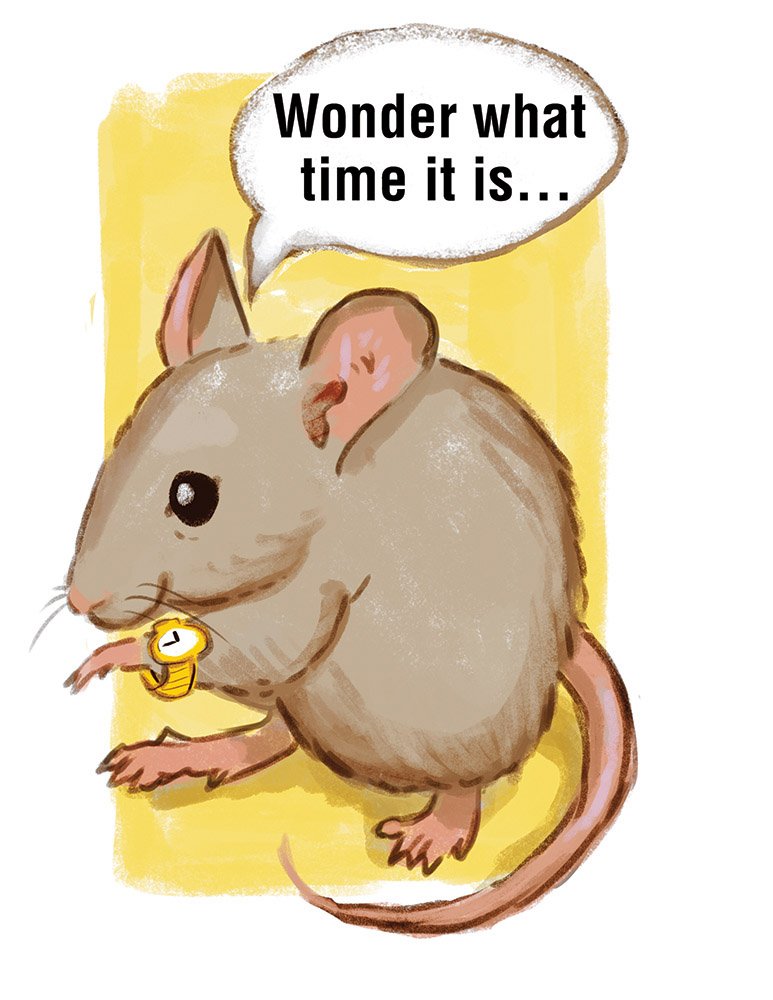Exercise affects how and when mice move, even when they aren't exercising, according to a new study.
By influencing built-in body clocks, exercise helps mouse bodies to recognize the optimal times they should be moving, and when they should be still. The study suggests the same may hold true for other mammals, including humans.
Most of us have heard of circadian rhythms. Our heartbeats, hormones, hunger, alertness, digestion, fatigue and other bodily functions move through regular cycles on a schedule that is predictable and syncopated, but changing as circumstances demand.
Physical activity, in people and most animals, likewise tends to follow a broad, circadian pattern.
Most obviously, we tend to sleep at night, hardly moving, and to be active during the day.
But during the day, too, physical activity by people usually shows certain patterns, although those patterns noticeably change with age, recent science shows. In a telling 2009
study published in Proceedings of the National Academy of Sciences, scientists asked young adults and older people to wear activity monitors for a week as they went about their lives and then plotted each volunteer's 24-hour movements.
The resulting graphs showed that the young people moved quite a bit during the day, with frequent peaks and valleys in their activities. These patterns weren't neatly consistent; some days, someone might sit and barely move early in the day, and on other days, he might be moving early on and quiet later.
But there was generally an internal logic to the movement, the scientists concluded. If someone had been still for some time, he then would start moving; and if someone had just moved or exercised a lot, he often would take some time to settle, because presumably the body was still physiologically aroused, but would then be still.
In essence, the young people's bodies seemed to be somehow remembering and responding to what that body had just been doing, whether sitting or moving, and then calculating a new, appropriate response -- moving or sitting. In doing so, the researchers thought, the body created a healthy, dynamic circadian pattern.
Interestingly, these dynamic patterns of movements in the young people were quite similar to those seen in healthy, young laboratory animals, said Frank A.J.L. Scheer, an assistant professor at Harvard Medical School and director of the Medical Chronobiology Program at Brigham and Women's Hospital in Boston, who oversaw the study, suggesting that there are biological imperatives to movement patterns even among those of us who live modern, office-bound lives.
The "memory" in those patterns was reduced drastically with age, however. In the 2009 study, older people showed less movement during the day and more random movement at night. They were still when they probably should have been moving and restless when they should have been still. Their movement patterns in general became more random, Scheer said.
But whether these undesirable changes were caused solely by aging or also by other factors was not clear. So for the new study, which also was published in Proceedings, Scheer and his colleagues, including Kun Hu at Harvard and Johanna Meijer at Leiden University in the Netherlands, gathered mice ranging in age from young adults (6 months old) to almost ancient (2 years old) and settled them in cages equipped with infrared sensors that would continually monitor their physical activity.
They also gave the animals running wheels. They let the animals run at will for a month.
Unsurprisingly, the young mice, which ran quite a bit, rapidly developed substantial peaks and valleys of activity, with clear demarcations between the movements associated with daytime and night. The older animals had similar, but more blunted patterns.
Then the scientists removed the wheels.
Within days, all of the animals began showing more random patterns of movement. They might suddenly race around the cage during what should have been their quiet period or crouch, unmoving, when they would normally have been active.
And most interestingly, the patterns of the young mice and the old mice were much more alike than they had been before.
That finding suggests, Scheer said, that exercise affects daily movement patterns more than age does. Take away a young mouse's running wheel and its activity patterns will look similar to that in an older animal.
However, as soon as the researchers restored the running wheels to the animals' cages, young and old mice began exercising again and had soon reinstated their former, healthy patterns of movement. Elderly mice had some peaks and valleys, and the young mice had many.
Exercise by definition influences how much activity someone completes during the day. But Scheer and his colleagues believe exercise makes the body better able to judge when and how much more it should be moving and when it should be at rest.
ActiveStyle on 06/01/2015
